The golf swing is a complex and precise movement that requires a combination of skill, coordination, and athleticism. However, even the most experienced golfers can struggle with swing faults (TPI refers to as swing characteristics) that hinder their performance on the course. These characteristics, such as: over the top, early extension, sway, slide, hanging back, etc. can be frustrating and limit a golfer’s potential. That’s why it’s crucial to address these swing characteristics and find effective solutions. One valuable resource in this pursuit is physical therapy, which offers specialized techniques and exercises to enhance golf performance. Additionally, the insights provided by the Titleist Performance Institute’s golf assessment can offer invaluable guidance in identifying and correcting specific swing faults.
In this Article
The Golf Swing Faults
(Characteristics)
Here are the 12 swing characteristics. These swing faults can lead to a lack of consistency, accuracy, and power in their shots. Fortunately, by understanding and addressing these swing faults, golfers can make significant improvements in their game.
1. S-Posture
Excessive arching of the lower back during setup, which can lead to swing faults and lower back stress.
2. C-Posture
Rounded shoulders and a hunched thoracic spine at setup, affecting swing mechanics and potentially leading to higher shots
3. Reverse Spine Angle
Excessive backward bend or lateral bend of the upper body during the backswing, causing path problems and potential lower back pain
4. Flat Shoulder Plane
Horizontal rotation of the shoulders during the backswing instead of a perpendicular movement to the spine angle, leading to swing plane issues and reduced power.
5. Early Extension
Forward movement of the lower body towards the ball during the downswing, impacting stability and the sequence of motion.
6. Hanging Back
Lack of weight shift towards the target on the downswing, resulting in reduced power and speed.
7. Casting
Premature release of wrist angles on the downswing, leading to a weak impact position, loss of power, and increased spin.
8. Scooping
Early release of wrist angles through impact, causing a weak impact position with the left wrist cupped, resulting in a loss of power and consistency.
9. Chicken Winging
Bending of the lead arm and cupping of the lead wrist through impact, reducing power and adding loft and spin to the ball.
10. Over the Top
Outside-to-inside swing path on the downswing, leading to path problems and potential slicing or pulling of the ball.
11. Slide
Excessive lateral movement of the lower body towards the target during the downswing, affecting stability and potentially creating a steep downward attack angle.
12. Late Buckle
Dropping or dipping of the body after impact, with a sudden bend in the knees, affecting balance and potentially leading to high shots with excessive spin.
Insights From Titleist Performance Institute’s Golf Screen
The Titleist Performance Institute (TPI) is a renowned organization dedicated to golf-specific research and training. TPI’s golf assessment provides valuable insights into a golfer’s physical capabilities and limitations that may affect their swing mechanics. This assessment evaluates areas such as mobility, stability, strength, and body awareness specific to the golf swing. By undergoing a TPI golf assessment, golfers gain a deeper understanding of their body’s strengths and weaknesses, allowing them to tailor their training and physical therapy programs accordingly. The TPI assessment can pinpoint specific areas that require improvement, guiding both golfers and physical therapists in developing effective strategies to overcome swing faults.
By combining the expertise of physical therapists with the insights from the Titleist Performance Institute’s golf assessment, golfers can gain a competitive edge. Physical therapy provides targeted interventions to address swing faults, improve physical capabilities, and enhance overall golf performance. The TPI assessment offers a comprehensive evaluation of a golfer’s body mechanics, guiding the development of personalized treatment plans. Through this collaboration, golfers can overcome their swing faults, optimize their game, and reach their full potential on the course.
“By combining the expertise of physical therapists with the insights from the Titleist Performance Institute’s golf assessment, golfers can gain a competitive edge.”
The Role of Physical Therapy in Improving Golf Performance
Physical Therapist’s responsibilities may include:
- Injury Assessment and Treatment: Physical therapists evaluate golfers for any musculoskeletal imbalances, weaknesses, or injuries that may affect their performance. They develop individualized treatment plans using various therapeutic techniques to alleviate pain, restore function, and facilitate healing.
- Golf-Specific Rehabilitation: Physical therapists design rehabilitation programs tailored to golfers’ specific needs, addressing areas of weakness or limitations that may hinder performance. They focus on restoring mobility, strength, flexibility, and stability to help golfers return to the course safely and efficiently.
- Performance Enhancement: Physical therapists analyze golfers’ movement patterns, posture, and biomechanics to identify areas for improvement. They develop exercise programs to enhance strength, power, flexibility, and coordination, aiming to optimize swing mechanics, increase clubhead speed, and prevent future injuries.
- Injury Prevention Programs: Physical therapists educate golfers on proper warm-up routines, stretching exercises, and body mechanics to minimize the risk of injury during practice and play. They provide guidance on injury prevention strategies and techniques to optimize golf performance and longevity in the sport.
- Equipment Assessment and Modification: Physical therapists may collaborate with golf professionals and club fitters to assess golfers’ equipment, ensuring proper fit and customization to optimize swing mechanics and reduce the risk of injury.
- Education and Advice: Physical therapists educate golfers on proper body mechanics, ergonomics, and self-care strategies to maintain optimal physical condition, prevent overuse injuries, and enhance performance. They may provide guidance on appropriate training methods, rest and recovery, and injury management.
Overall, physical therapists play a crucial role in the holistic care of golfers, helping them overcome injuries, improve performance, and maintain long-term physical health and well-being in the context of the sport.
Read The 16 Movements that are part of the TPI Assessment.
Conclusion
It is important to recognize that overcoming swing faults requires a combination of knowledge, practice, and often professional guidance. Seeking the assistance of golf instructors or physical therapists specialized in golf-specific training can provide invaluable insights and personalized strategies to correct these swing faults.
As you continue your golf journey, remember that improvement comes with patience, persistence, and a commitment to refining your technique. Embrace the process of analyzing and working on your swing, focusing on proper body mechanics, balance, and coordination. Practice diligently, both on the course and in targeted exercises or drills recommended by professionals.
By addressing and correcting these swing faults, you will unlock a new level of consistency, power, and accuracy in your game. Whether you are an amateur golfer seeking to lower your scores or a competitive player aiming for tournament success, the journey to overcoming swing faults is an ongoing one.
Call Today to Book Your Golf Assessment
Ready to take your golf game to the next level?
Book Now










